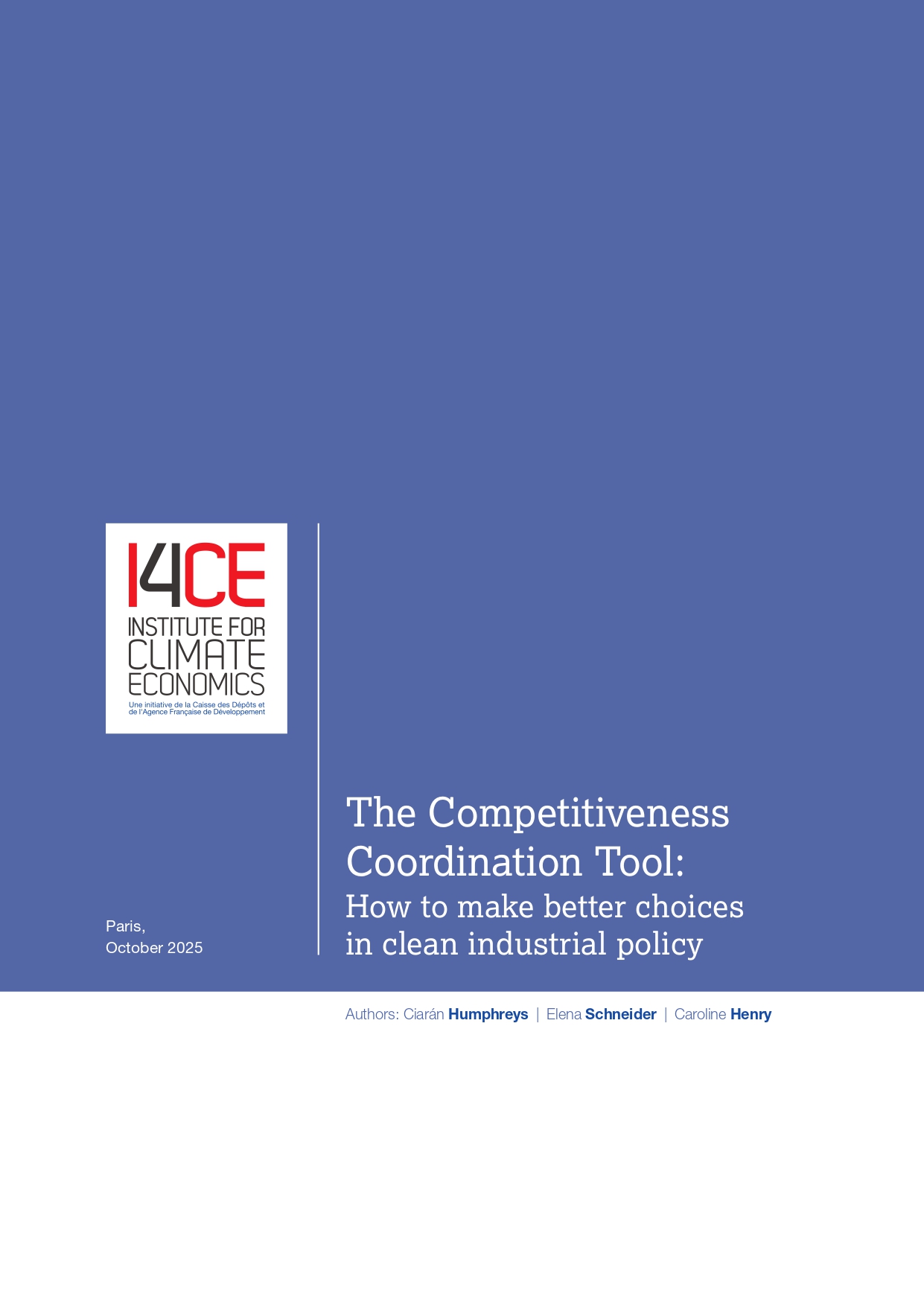The Competitiveness Coordination Tool: How to make better choices in clean industrial policy
Europe is levelling up its industrial policy. From the Clean Industrial Deal to proposals for a more flexible EU budget, the Commission signals new ambition to build scale in strategic cleantech sectors and strengthen Europe’s decarbonising industrial base. Yet this firepower risks losing impact if spread too thinly. Limited resources demand sharper focus. As the Draghi Report made clear, Europe must act strategically: understand its industrial strengths and vulnerabilities, prioritise the sectors that matter most, and align funds, regulation, and institutional capacity accordingly.
Europe’s current coordination space for industrial policy remains fragmented and unfocused. A patchwork of instruments and funding schemes prevents the concentration of resources that would be needed to shape a continent-wide industrial strategy. Recent EU budget proposals do little to alter this. Without major fiscal expansion, deeper coordination between Member States and EU institutions offers the best path toward a strategic competitiveness agenda.
Enter the Competitiveness Coordination Tool (CCT) – a proposed instrument to turn ambition into strategy. Designed to bring clarity and coherence, the CCT aims to provide a rigorous, evidence-based methodology to identify which technology sectors Europe should prioritise for its decarbonisation, resilience, and competitiveness, alongside a governance framework to align existing EU tools and coordination spaces. Its contours remain undefined, but expectations are high: it could help policymakers make collective, informed decisions on where Europe’s industrial policy should focus efforts and funding.
The CCT’s success requires both a clear methodology and governance that complements, without duplicating, existing structures. The paper makes proposals for both.
First, it introduces a methodology for strategic assessment. It combines quantitative and qualitative indicators to position sectors along two axes – Competitiveness and Strategic Importance – grouping them into four categories: Critical Leaders, Competitive Opportunities, Vulnerabilities, and Limited Priority Areas. To illustrate its value, the paper applies this to five cleantech sectors where competitiveness, decarbonisation, and security goals intersect. This exercise shows how structured assessment can help policymakers distinguish where resources are most urgently needed – and where they may be more safely deprioritised. It challenges assumptions, safeguards flagships, elevates under-recognised sectors, and prompts a reality check in others. Ultimately, it equips decision-makers with evidence to allocate resources wisely.
Second, it explores how the CCT could fit within EU institutions, building on existing coordination spaces. Drawing lessons from coordination frameworks like the European Semester and the Energy Union, it provides options for how the CCT complement rather than replicate or duplicate current mechanisms.
Given limited EU resources and competences, the goal is not full Europeanisation of industrial policy, but to make it more European: better aligned, more transparent, and directed toward shared goals. One year after the Draghi Report, Europe is beginning to realise its clean industrial ambition. The Competitiveness Coordination Tool is the next step: a means to turn fragmented efforts into a coordinated industrial strategy. With transparent priorities, robust governance, and agile collective action, the CCT can help Europe act together on the sectors that will be central to its competitiveness, security, and decarbonisation in the decades ahead.



